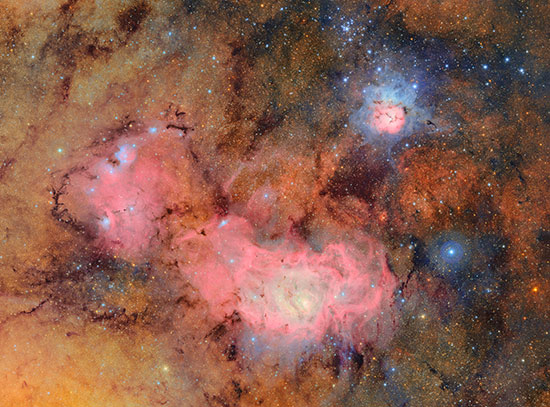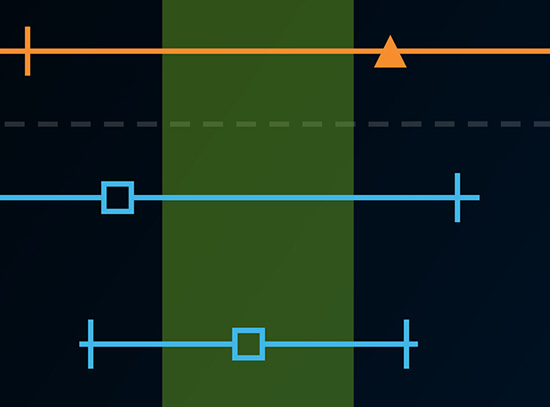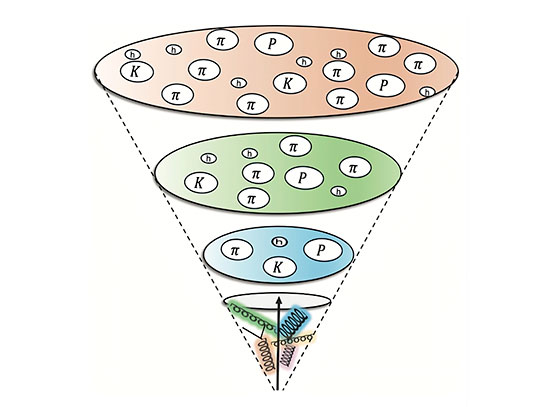High-Energy Physics
Cosmology & Astrophysics
Solving problems in observational cosmology: how to measure and constrain properties of dark matter, dark energy and the standard cosmological model.
Electronic Detector
Studies very rare processes at the Intensity Frontier.
Omega
Group members are collaborators on the LHC ATLAS experiment.
High-Energy Theory
Focuses on providing theoretical foundation for the search for physics beyond the standard model, including lattice QCD calculations of key quantities required for this quest.
Software and Computing
Nuclear and Particle Physics Software
Participates in experiments across BNL's nuclear and particle physics programs, providing software and expertise with a particular emphasis on common software solutions.
Scientific Data and Computing Center
The SDCC provides computing services for ATLAS, Belle II, experiments at RHIC, and other programs.
Nuclear Physics
sPHENIX
Responsible for the operation of the sPHENIX experiment at the Relativistic Heavy Ion Collider (RHIC) and the analysis of data from the detector. The group also supports the PHENIX collaboration as it finalizes the analysis of collected data. The group contributes to the design of the coming EIC detector, ePIC, and to the neutrinoless double beta decay experiment, nEXO.
STAR
Responsibile for the operation and physics exploitation of the STAR experiment at RHIC.
Cold QCD
Lead and support of the Cold QCD program at RHIC and the future EIC. This includes the scientific program, hadron polarimetry and the efforts towards the realization of an experimental program at EIC.
RIKEN BNL Research Center
Conducts quantum chromodynamics and proton spin structure research.
Nuclear Theory
The nuclear theory group conducts research in all areas of QCD, including structure of hadrons and nuclei at high energies, the QCD phase diagram and the properties of quark-gluon matter.
High-Energy Physics
Belle II
An experiment at Japan’s SuperKEKB particle accelerator recording decay products from electron-positron collisisons. Brookhaven hosts a copy of the raw data and an archive of the detector’s conditions at the time of collision.
Dark Energy Survey
Seeks to probe the origin of the accelerating universe and uncover the nature of dark energy by measuring the 14-billion-year history of cosmic expansion.
Rubin Observatory Legacy Survey of Space and Time (LSST)
A 3.2 gigapixel camera mounted in a ground-based telescope designed to produce the widest, densest, and most complete images of our universe ever captured. Dark Energy Science Collaboration (DESC) is the international science collaboration that will make high accuracy measurements of fundamental cosmological parameters using data from LSST.
Deep Underground Neutrino Experiment
An international collaboration working to precisely measure neutrino oscillations.
ATLAS
An experiment at CERN's Large Hadron Collider designed to detect particles created by proton-proton collisions.
Daya Bay Neutrino Experiment
An international collaboration studying the subtle transformations of neutrinos.
Short-Baseline Neutrino Program
Measures low energy neutrino cross sections and investigates low energy excess events observed by the MiniBooNE experiment.
Muon g-2
A high precision measurement of the muon's g-2 value. A deviation between theory and observed value will suggest the existence of new particles. See also: Fermilab Muon g-2 site
PROSPECT
Precision measurement of reactor antineutrino spectrum in searching for new oscillation signatures of neutrinos.
Nuclear Physics
sPHENIX
A radical makeover of the PHENIX experiment experiment that will significantly enhance scientists' ability to explore quark gluon plasma.
PHENIX
A decommissioned experiment at the Relativistic Heavy Ion Collider designed to explore quark gluon plasma.
STAR
An experiment at the Relativistic Heavy Ion Collider designed to explore quark gluon plasma.
Electron-Ion Collider
A next-generation facility at BNL, whose ability to collide high-energy electron beams with high-energy ion and polarized proton beams will give access to those regions in the nucleon and nuclei where their structure is dominated by gluons thus providing unique capabilities for the study of QCD.
Computing
Lectureship Awards
History
Department Media
Seminars & Colloquia
There are no events scheduled at this time.
There are no events scheduled at this time.
There are no events scheduled at this time.
See all...
Physics News

Ever-changing Universe Revealed in First Imagery From NSF–DOE Vera C. Rubin Observatory

PubSci Talks LuSEE-Night: Listening to the Universe from the Far Side of the Moon

Muon g-2 Announces Most Precise Measurement of the Magnetic Anomaly of the Muon

Maximal Entanglement Sheds New Light on Particle Creation










